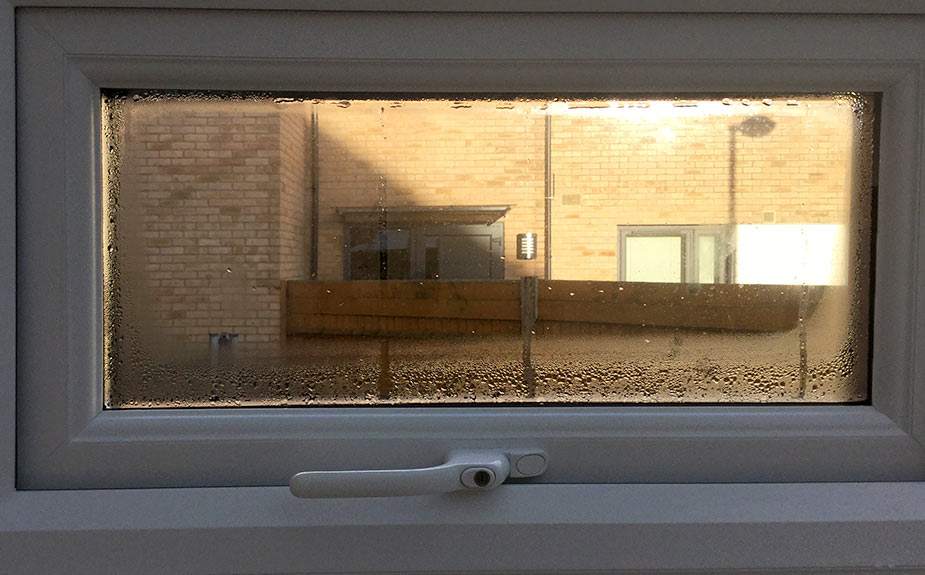Condensation in Conservatories

The BBSA recently contacted us to offer expert advice on a complaint made about another blind company where mould had formed on their blinds because of condensation. Their customer was apparently alleging that the blinds had caused the condensation; which was not the case, but it raises a point worthy of comment. Condensation occurs in a conservatory when humid air meets a cold surface, allowing water to condense.
Condensation In A Newly Built Conservatory
As you can clearly see from the above photograph; taken on the day that we installed the blinds. The condensation occurs irrespective of whether you have blinds fitted.
Condensation is common in newly built conservatories. This is because there is still a great deal of moisture still in the fabric of the building; from all the concrete and plaster. It can take weeks for this to dry out completely; sometimes longer if the weather is very cold and/or wet.
Adequate Ventilation
The only real ‘cure’ for long-term condensation is to create adequate ventilation for the cold moist air (open the trickle vents at the heads of the windows and doors) and to improve the heating and air flow. This is something to consider at the design stage of the conservatory – not after they build it.
For a short-term solution you can hire a dehumidifier (but be careful not to dry out the structure too quickly) or you can even buy large silica-gel cushions (normally meant for cars) that will help to absorb moisture from the air, but that is just dealing with the symptoms – not necessarily the cause.
Condensation is more likely to occur if your conservatory is isolated from the rest of your home by external doors, gets rarely used, or if there are lots of people in the room. It can even indicate that there is a small leak.
Small conservatories suffer more than average-sized conservatories because the small volume of air can quickly reach “dew point” (where there is so much humidity that it can condense).
How does this affect blinds?
Recessed window blinds (like in the above image) can mean that the blinds get fitted so close to the glass that the fabric can come into contact with the condensation. Whilst mould can only form on organic material, any dirt from your window will then create a breeding ground for bacteria.
The proximity of the blinds to the glass will not cause condensation to occur – the conditions must pre-exist for this to happen but, in some circumstances, they might act as a barrier which could limit air-flow and so take longer for the condensation to evaporate.
If your conservatory suffers from condensation:
- Delay installation of blinds in a newly built conservatory until it is dry
- Consider hiring a dehumidifier
- Improve ventilation and air flow throughout the conservatory
- Increase the heating and flow of warm air
- Avoid any ‘cold spots’ from being created
- Keep your glass clean, but avoid any aggressive chemicals
- Make sure to keep blinds clean at all times
- Keep blinds retracted when you know condensation is forming
- Check for a small concealed leak or water ingress by capillary action
- In serious cases, take your blinds down to stop them from becoming damaged















